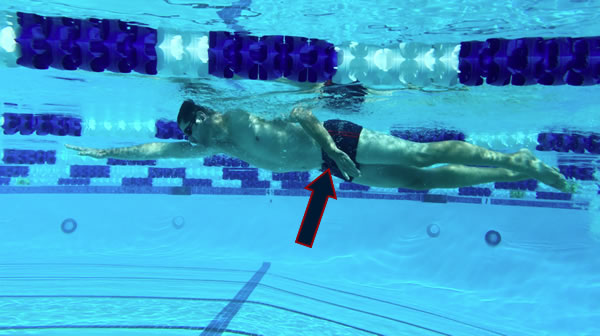Many swimmers focus too much on the back end of their strokes (past the hip and exit) which is a waste of time and power.
By doing so you risk throwing yourself off balance and over gliding– both of which will slow you down and waste energy.
Instead, focus on the front end with a long catch and then a powerful and quick pull– “Quick in the back, long in the front”. But how do you increase your power in the front?
First off, you need to make sure your placement is wide.
Typically, when athletes move to a wider stroke they think that they are entering too wide but in reality there placement is just perfect. I like to visualize pointing to the far corner of the lane as I swim.
A wider catch will also prevent crossing over and keep you balanced in the water for better rotation. Catch up and ¾ catch up are perfect drills to help with this ideal hand position. (these are both in our Tri Swim Success course)

The next ingredient for a powerful catch and pull is a high elbow catch. Your arms should make half a “Superman” logo when it pulls.
You also want this part of the pull to be quick and powerful since this is where your propulsion comes from. Once again catch up drill and ¾ catch up drill are good to develop this as are water polo sprints and underwater recovery/doggy paddle freestyle.
There are other ways to increase power in this phase of the stroke though.
For one, using the Vasa Ergometer is an ideal way to do so because you get the ability to work on form coupled with extra resistance for strength.
You can also see your power numbers go up as your form and deltoid and lat strength improve. Resistance bands can also help here because you can allow your arms to snap back each time and not over-glide in the end part of your stroke.
In the weight room, straight arm lat pull downs target very similar muscle groups to the ideal swim stroke and can help improve that power. Finally, using paddles adds resistance and a strength element in the water.
If you were taught to glide, it’s time to change and embrace a quicker more powerful swim stroke.
The post Glide or no glide in freestyle? appeared first on Triathlon Swim Training.
Via Sports http://www.rssmix.com/
No comments:
Post a Comment